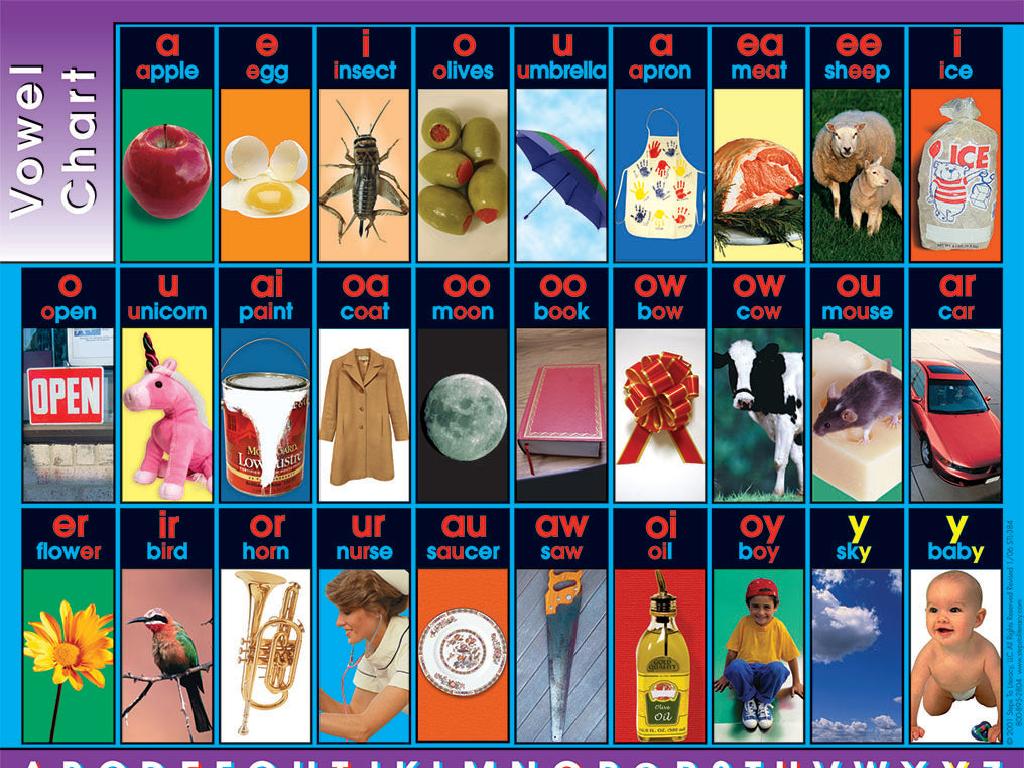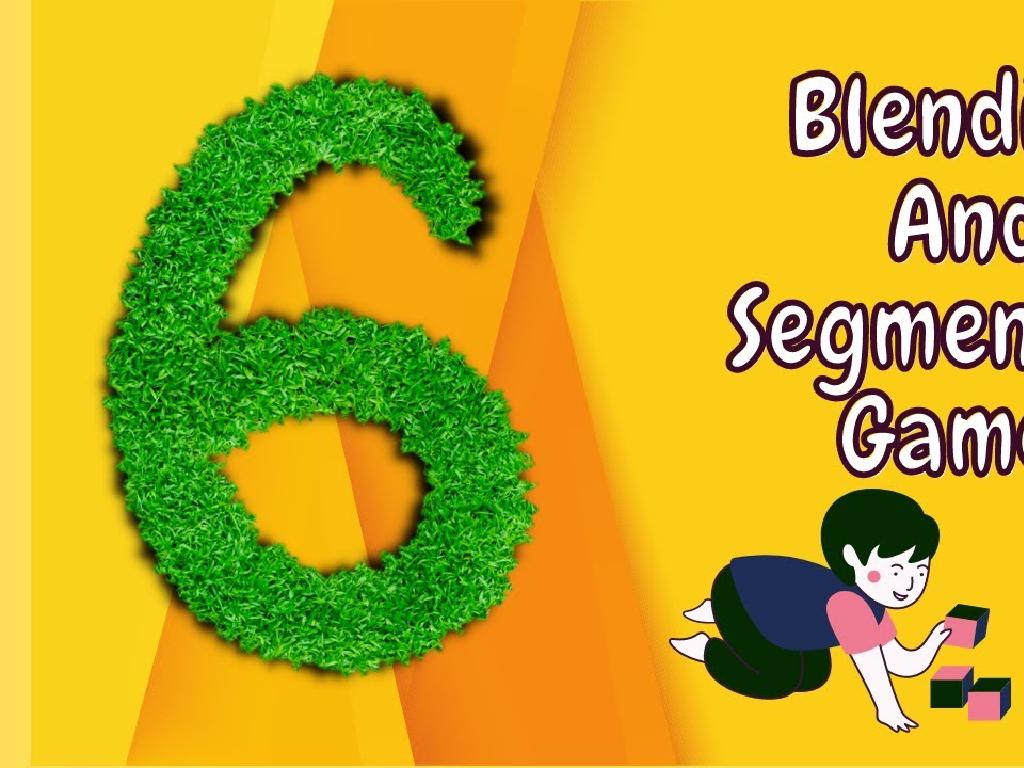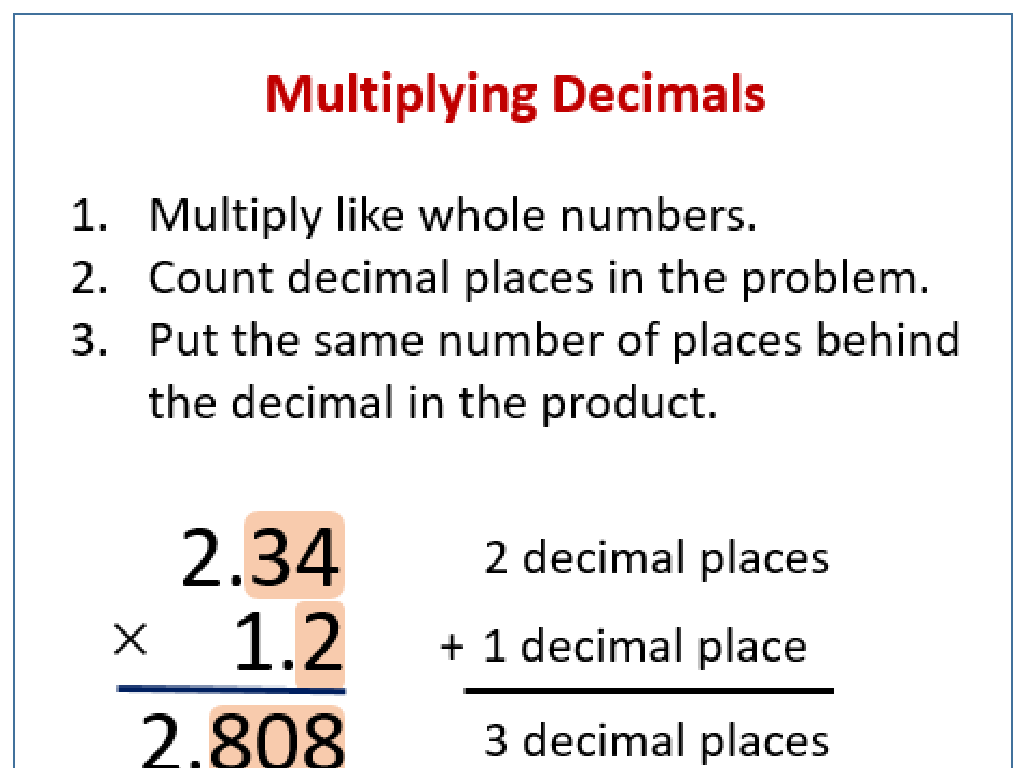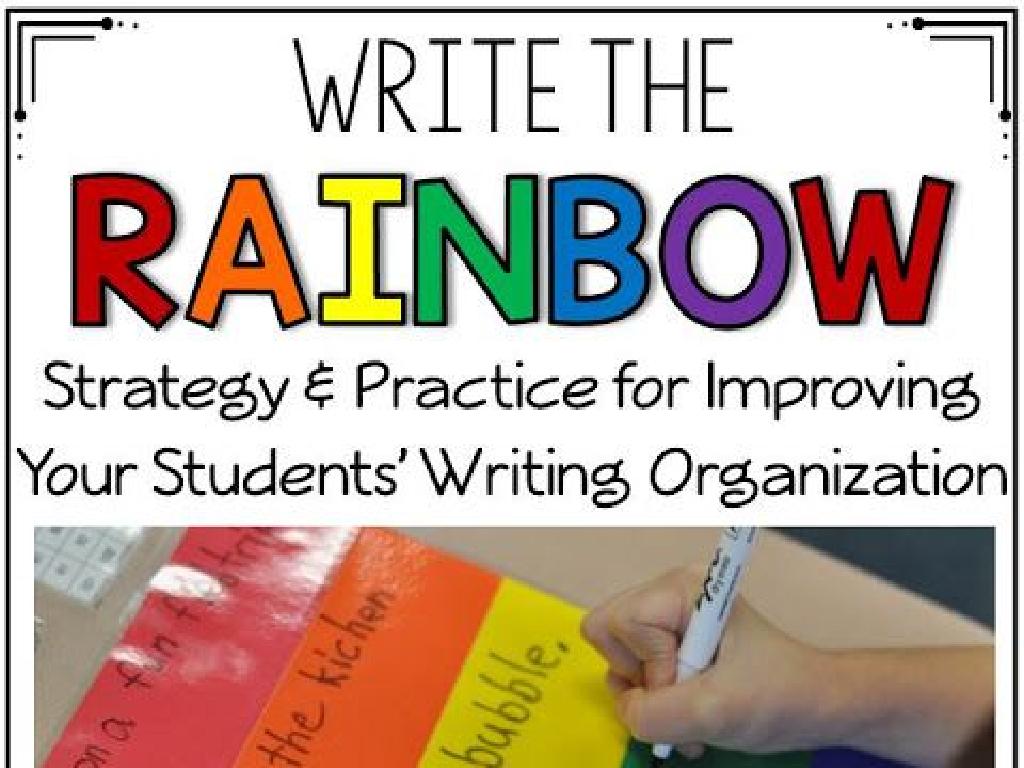Estimate Sums, Differences, Products, And Quotients: Word Problems
Subject: Math
Grade: Fourth grade
Topic: Mixed Operations
Please LOG IN to download the presentation. Access is available to registered users only.
View More Content
Introduction to Estimation
– What is estimation?
– Estimation is finding a number close to the exact amount.
– Estimation in daily life
– Helps in quick calculations, like shopping or cooking.
– Terms: sums, differences, products
– Sums add, differences subtract, products multiply.
– Terms: quotients
– Quotients divide, showing parts of a whole.
|
This slide introduces the concept of estimation, which is a fundamental skill in mathematics and daily life. Estimation allows us to make quick and reasonable guesses about a quantity without needing an exact number. It’s particularly useful for tasks such as budgeting, measuring ingredients, or planning time. Understanding the terms sums, differences, products, and quotients is crucial as they represent the basic operations in math: addition, subtraction, multiplication, and division, respectively. Encourage students to think of times they have used estimation outside of school and share examples. This will help them relate to the concept and understand its practical applications.
Estimating Sums in Word Problems
– Learn to round numbers
– Round to the nearest ten or hundred to simplify
– Add rounded numbers for sums
– After rounding, add the numbers to estimate total
– Example: Apples in baskets
– If one basket has 123 apples and another 78, estimate total
– Practice estimation with exercises
|
This slide introduces students to the concept of estimation, a valuable skill for quick and efficient problem solving in math. Start by explaining rounding: if a number is 5 or above, we round up, and if it’s 4 or below, we round down. Use visual aids to help students understand rounding to the nearest ten and hundred. Then, demonstrate how to add these rounded numbers together to estimate a sum, using the example of counting apples in baskets. Provide additional practice problems for students to apply these concepts, ensuring they understand that estimation is not about finding the exact answer, but a close approximation that is reasonable and quick to calculate.
Estimating Differences in Word Problems
– Learn to round numbers for subtraction
– Round to the nearest ten or hundred before subtracting
– Estimate change from a purchase
– If you buy a toy for $15 with a $20 bill, how much change do you get?
– Example: Compare plant heights
– If one plant is about 20 inches and another is around 25 inches, what’s the estimated height difference?
– Practice with real-life scenarios
|
This slide introduces students to the concept of estimating differences by rounding numbers before subtracting. Start by explaining rounding to the nearest ten or hundred, then apply this to estimate the change from a purchase, such as buying a toy and calculating the expected change. Use the example of comparing the heights of two plants to show how estimation works in a real-world context. Encourage students to think of other scenarios where they can apply estimation, like comparing lengths, distances, or even time. Provide additional practice problems for students to work on individually or in groups to reinforce the concept.
Estimating Products in Multiplication
– Multiplication as repeated addition
– If you have 4 bags with 5 apples each, that’s 5+5+5+5.
– Rounding numbers to estimate
– Round to nearest ten to simplify: 24 x 3 H 20 x 3.
– Example: Estimating seeds in packets
– If 1 packet has about 50 seeds, how many in 5 packets?
– Practice estimation with word problems
|
This slide introduces students to the concept of estimating products in multiplication by understanding multiplication as repeated addition and rounding numbers. Start by explaining that multiplication is like adding the same number over and over. Then, show how rounding numbers to the nearest ten can simplify multiplication problems. Use an example like estimating the total number of seeds in multiple packets to make it relatable. Encourage students to practice by rounding numbers in word problems to get a close estimate of the answer. This will help them quickly solve problems and check their work for reasonableness.
Estimating Quotients in Division
– Simplify division by estimating
– Round numbers to nearest ten or hundred to make division easier
– Division as repeated subtraction
– Think of division like taking away equal parts, again and again
– Example: Dividing supplies among students
– If 150 supplies are divided among 30 students, estimate how many each gets
– Practice estimation with word problems
|
This slide introduces students to the concept of estimating quotients to simplify division problems. Start by explaining that large numbers can be rounded to the nearest ten or hundred to make division easier. Then, reinforce the understanding of division as repeated subtraction. Use a relatable example, such as dividing classroom supplies among students, to show how estimation works in real-life scenarios. Encourage students to practice by solving word problems that require them to estimate before dividing. Provide additional examples and practice problems to ensure students grasp the concept of estimation in division.
Estimation in Word Problems
– Apply estimation in real life
– Like guessing the total cost of groceries.
– Read problems to find key info
– Look for numbers, operations, and the question.
– Use strategies for estimation
– Round numbers, then add, subtract, multiply, or divide.
– Find reasonable answers
– Your estimate should make sense for the problem.
|
This slide aims to teach students how to use estimation to solve word problems, which is a valuable skill in everyday life. Encourage students to read word problems carefully to identify important information such as numbers and the question being asked. Discuss different estimation strategies, such as rounding numbers to the nearest ten or hundred before performing operations like addition, subtraction, multiplication, or division. Emphasize that the goal is to find an answer that is close enough to be reasonable, but not necessarily exact. Provide examples of real-world scenarios where estimation is useful, such as calculating the time needed to travel somewhere or estimating the cost of items while shopping.
Class Activity: Estimate the Grocery Bill
– Work in pairs on grocery list
– Round prices and estimate sum
– If apples cost $2.99, round to $3 and add
– Compare estimate to actual cost
– After estimating, check the receipt total
– Discuss estimation accuracy
– Talk about why estimates might differ
|
This activity is designed to help students practice estimation in a practical context. Have them work in pairs to foster collaboration. Provide a grocery list with prices that are not whole numbers, so students must round each item’s price to the nearest dollar before adding them up. After they calculate the estimated sum, reveal the actual total cost of the grocery list and let them compare their estimate. Encourage a discussion on the importance of estimation and its usefulness in everyday life. Possible variations of the activity could include estimating the cost with coupons, discounts, or different rounding rules (e.g., to the nearest ten cents).
Estimation Techniques: Review & Practice
– Recap key estimation concepts
– Review rounding numbers and using benchmarks
– Solve estimation practice problems
– Practice with word problems involving sums, differences, products, and quotients
– Get ready for a mini-quiz
– Mini-quiz will cover all estimation strategies learned
– Use estimation in daily life
– Think of examples like estimating time for chores or total cost while shopping
|
This slide aims to consolidate the students’ understanding of estimation in arithmetic operations. Begin by reviewing the main points of the lesson, emphasizing the importance of rounding numbers and using benchmarks to estimate. Provide a set of practice problems that involve real-world scenarios to help students apply estimation techniques to sums, differences, products, and quotients. Inform the students about the upcoming mini-quiz and encourage them to prepare by practicing with additional problems. Highlight the practicality of estimation in everyday situations, such as calculating time or money, to make the concept more relatable and engaging. The teacher should be ready to offer guidance and support during the practice session and encourage students to discuss their estimation methods with peers.
Mini-Quiz: Estimation Techniques
– Test estimation understanding
– Solve estimation problems
– Try estimating sums, differences, products, and quotients
– Review answers together
– We’ll go over each problem as a class
– Clarify doubts in discussion
– Ask questions if you’re unsure about any answers
|
This mini-quiz is designed to assess students’ grasp of estimation in arithmetic operations. Provide a set of word problems that require students to estimate sums, differences, products, and quotients. Encourage them to solve the problems independently, reinforcing the estimation strategies taught in class. After completion, review the answers collectively, ensuring to explain the reasoning behind each solution. This collaborative review process will help clarify any misunderstandings and solidify the concept of estimation. Be prepared with additional examples in case students need further clarification and encourage them to participate actively in the discussion.
Estimation: Wrapping Up and Homework
– Recap on estimation techniques
– Estimation in daily life
– Examples: Shopping, cooking, time management
– Homework: estimation worksheet
– Solve problems using rounding and approximation
– Be ready to discuss answers
|
As we conclude today’s lesson, remind students of the key estimation techniques we’ve covered, such as rounding to the nearest ten or hundred to make calculations easier. Discuss how estimation is a valuable skill in everyday life, helping with making quick decisions when shopping, cooking, or managing time. For homework, students will complete a worksheet with various word problems to practice their estimation skills. Encourage them to try their best and be prepared to discuss the strategies they used and the answers they found in our next class.





